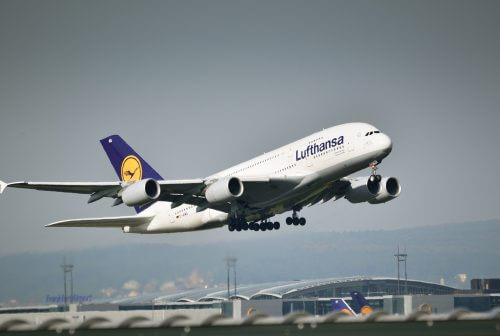A new air traffic control system could ensure passengers spend less time flying in the crowded skies

At the beginning of 2017, two large passenger planes and a jet executive plane practiced landing one after the other without the usual and continuous assistance of a flight controller. Instead, they used technology developed by NASA that allows planes to automatically "talk" to each other and to the control towers at the same time. If these test flights, conducted at an airport near Seattle, convince the experts, the technology could eventually be tested by American Aviation Administration And maybe even get his approval. And if all planes are one day equipped with such systems, more aircraft will be able to land in less time at US airports, which are becoming increasingly crowded.
Today, when planes prepare to land, pilots maintain continuous contact with air traffic controllers to ensure that all planes maintain a safe distance from each other. Because of the time they spend transmitting information, the rate at which the pilots can adjust the aircraft's speed depends on the rate at which the information is received from the control tower. Due to this waiting, it is necessary to increase the distance between the planes arriving at the airport and provide an additional safety margin, which reduces the number of planes that can land in a given period of time.
NASA's Orbit Space Management System (END) Saves words: it combines satellite tracking and automatic computer commands that allow tracking of the planes' positions and frequent updates of the pilots regarding the safe flight speeds before landing. This eliminates the need for additional space between the aircraft, and this can save fuel costs, reduce pollutant emissions from the engines and increase the number of flights landing in a certain period of time. "More landings per hour at airports means fewer passenger delays," says William Johnson, former manager of the system's demonstration project at NASA's Langley Research Institute.
How the system works
1. GPS signals show the position of each plane and its speed relative to the ground. The aircraft automatically transmits this information to the satellite and ground stations at a rate of about one per second.
2. On the ground, a computerized system calculates, based on the flight data, the ideal distance for each plane, so that its descent to the runway will be uniform and fuel efficient. Air traffic controllers transmit this information to pilots wirelessly.
3. The pilots enter the distance data into the FIM software installed in the computer system in the cockpit. The software also receives updates calculated from the same GPS signal regarding the flight speeds of nearby aircraft.
4. The FIM software processes all this information and calculates the correct speed to maintain an optimal distance between the planes preparing for landing without compromising their safety. The speed is displayed to the pilots in the cockpit and constantly updated until the wheels touch the ground.
Good to know: animation of ATD-1 system operation
for further reading

2 תגובות
It's more than a few percent. It's in the 10% area, and that's without taking into account energy savings and improving the quality of the environment.
An improvement of a few percent...what's all the fuss about? I thought it was an improvement of orders of magnitude. Sounds very insignificant.